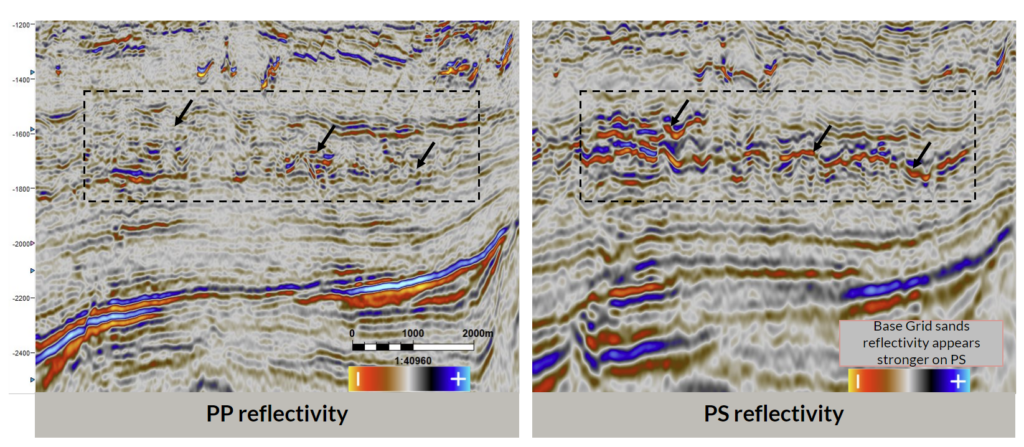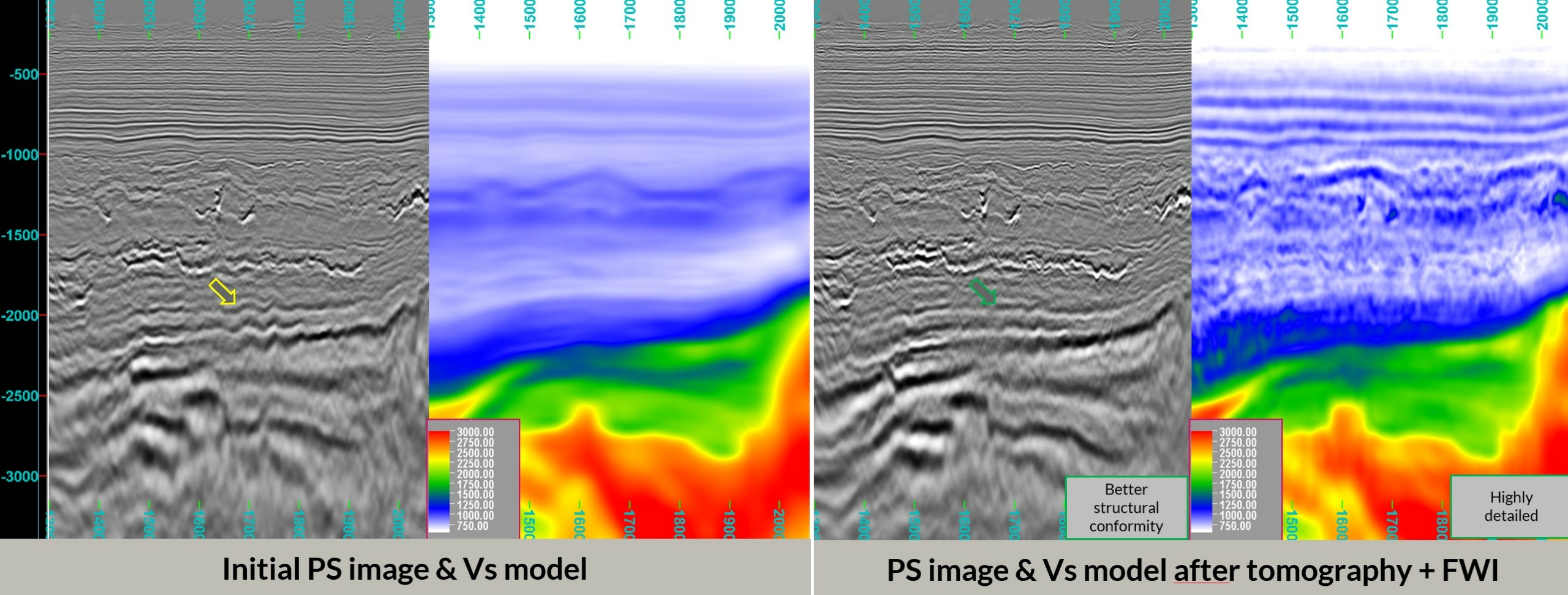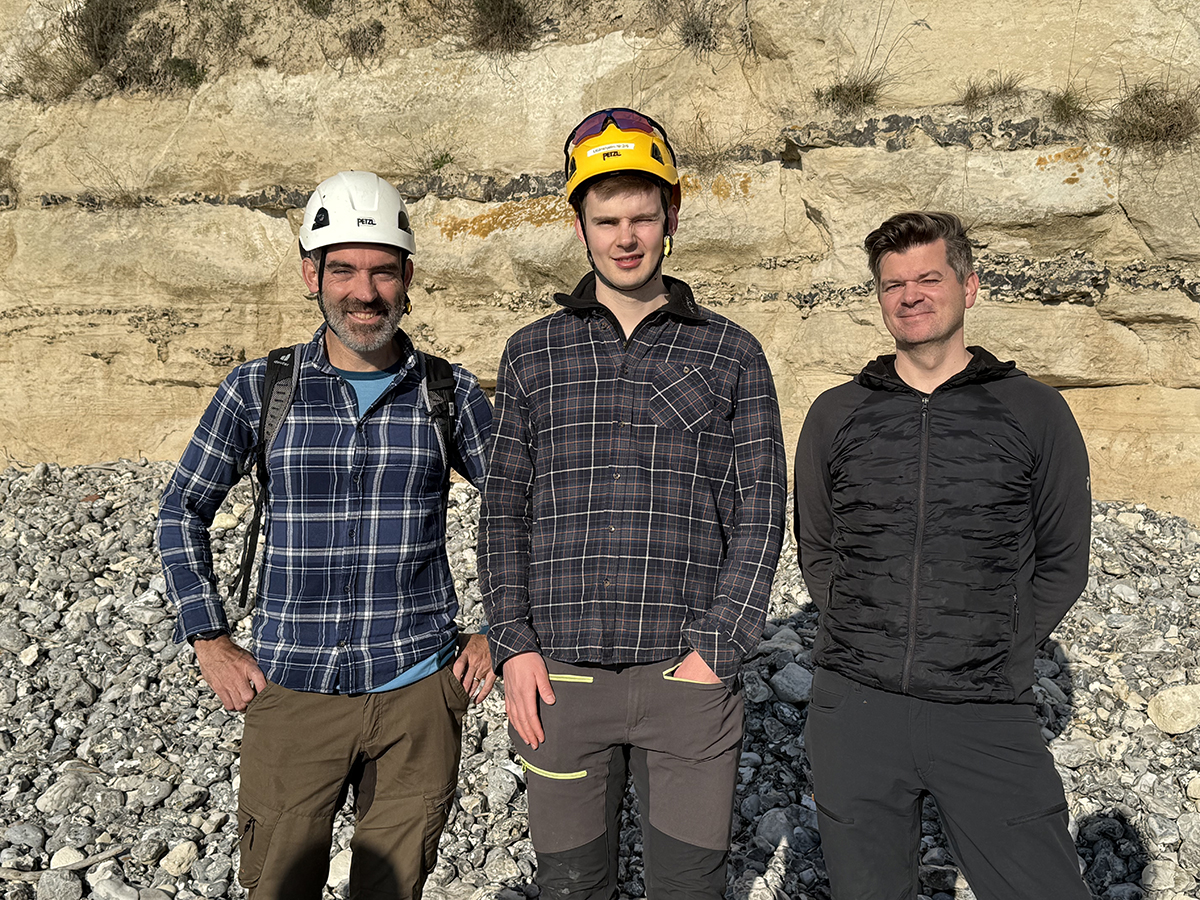Pioneering advances in seismic technology and PS-wave imaging at Aker BP
Over the past decades, geoscientists have sought to unlock the true potential of PS seismic data to enhance oil and gas exploration, development and production. Recent technological advancements and successful PS seismic imaging projects are now bringing this ambition closer to reality, with significant implications for field development and exploration planning.
Why PS waves? A new level of subsurface clarity
Historically, PP seismic data have been the industry standard for subsurface imaging. Conventional PP seismic waves, with compressional wave motion, are sensitive to both rock properties and their fluid fill, whereas the shear wave component of converted PS waves (compressional-to-shear) is largely unaffected by fluid properties. Analyzing both PP and PS seismic in conjunction therefore provides unique opportunities in distinguishing rock and fluid types and pinpointing resource-rich zones, imaging under gas-filled, attenuative structures and distinguishing saturation and pressure effects during production.
This clarity directly supports well planning, allowing us to more accurately target areas with potential oil and gas reserves. Similar advantages are seen in time-lapse (4D) seismic. Here, the addition of PS data can enable discrimination between pressure and saturation changes induced by hydrocarbon production, in turn providing important information for planning of infill wells. Collecting data with seismic receivers on the seabed captures both PP and PS waves, but until now, processing PS data effectively has been a challenge due to its complexity and the lack of advanced algorithms.
Benchmarking and processing: Laying the foundation
Aker BP recently conducted a comprehensive research and development benchmarking exercise for processing and imaging of PS data, using data from Ivar Aasen, focusing on achieving optimal results on field data applications and the development of robust algorithms. This benchmark serves as a key element in technical verification, proving the viability of using PS data for imaging prospective areas like those in Symra Phase 2, where utilization of PS data is planned to optimize recovery.
Parallel to the external benchmark, Aker BP has realized a new internally developed algorithm which addresses long-standing challenges in PS seismic data processing, such as decoupling PP and PS wave-propagation and scattering in an efficient and accurate manner. Although not yet applied in a full-scale setting, the initial field-data applications of the algorithm have already shown promising results.
Inspiring Symra Phase 2: Learning from Ivar Aasen
The PS benchmark at the Ivar Aasen field partially served as a technical validation of PS data for targets such as Grid sand injectites (Fig. 1) and Heimdal channel sands (Fig. 2), where the conventional PP data appear less efficient in characterizing these sands. This carries a direct implication for the phase 2 development of the neighbouring Symra field, aimed at Grid and Heimdal targets. Given the successful PS results at Ivar Aasen, the Symra license decided to process PS seismic data to assist well planning and field development for the phase 2 development. For the team at Symra, this will hopefully mean better subsurface understanding, improved well planning, and increased potential for efficient oil and gas recovery.

Enhancing data with full-waveform inversion: Improving resolution and reducing uncertainty
For conventional PP seismic, full-waveform inversion technologies have been key to improve the imaging robustness over the past decade. However, similar developments have been lacking for the more complicated PS seismic waveforms, which has slowed adoption of this datatype. Aker BP acknowledged that both collaboration with external vendors and performing internal R&D should be leveraged to close the technology gap for PS data processing.
A significant milestone achieved through collaboration with vendors has been field data applications of new implementations of full-waveform inversion of PS data. This advanced imaging technique brings sharper subsurface detail, reduces uncertainties, and opens new opportunities by providing a more robust view of complex geological formations. The level of detail offered in the resulting shear-wave velocity model (Fig. 2b)) can be much higher than the resolution limits of conventional PS processing methods (Fig. 2a)) and give a better structural image. As the first field-data verification and results from one vendor, these results have been published in conference settings [1].

To address the challenges of robust imaging with complex PS waves while accounting for the full elastic wave-physics of the subsurface, researchers at Aker BP have described a novel algorithm for PS-data full-waveform inversion. In an efficient manner, this development circumvents many of the approximations for wave-physics found in competing algorithms. The technology, along with promising initial field-data results, has been presented at the EAGE 2024 conference [2]. In this work, Fig. 4b) demonstrates the de-blurring properties of PS-FWI, compared to a PS-RTM shear-impedance image at the same frequency content (Fig. 4a). Similarly, initial tests on retrieving the shear-wave velocity with this methodology, Fig. 4c), suggests that the higher velocities of the Grid injectites are being correctly added. More involved and encouraging field-data applications are currently running. This R&D activity and its field data applications have majorly benefited from Aker BP’s newly installed on-premise computational resources.


The next steps in research and industry application
The efforts and achievements at Ivar Aasen and Symra are just the beginning. Aker BP is set to continue its commitment to PS seismic research and algorithm development, with a newly launched project extending through 2026. This initiative includes partnerships with organizations like NTNU, where industry-focused Ph.D. candidates contribute to the advancement of seismic technology.
Moving forward, we will work closely with service providers, including Viridien, TGS, and SLB, as they refine their PS data processing capabilities. This collaboration reflects a growing industry interest in making PS-wave imaging a commercial reality, further demonstrating the potential for PS seismic data to shape the future of oil and gas exploration.
Acknowledgments and looking forward
Special thanks go to the dedicated team members, including Ross Milne, Ole Edvard Aaker, Ørjan Pedersen, and Espen B. Raknes, who have driven this project since early 2021. Their work has already made an impact within Aker BP and in the wider industry, with presentations at prominent conferences like EAGE.
We thank the Ivar Aasen license, Aker BP, Equinor, Sval Energi, OKEA and M Vest Energy, for permission to show the seismic-related images.
Geophysicists at the Ivar Aasen asset, particularly Jon Moen Lippard and Nora Løhre, are thanked for their support and interest in the project.
As we advance, these technological breakthroughs position Aker BP at the forefront of seismic innovation, reinforcing our commitment to efficient, data-driven field development.

References
[1]: Zhai, Yongbo, et al. PS Reflection-Based Full-Waveform Inversion Using Single-Mode Propagator. SEG Technical Program Expanded Abstracts, 2024
[2]: Aaker, O. E., Ø. Pedersen, and E. B. Raknes. «Elastic Reflection Waveform Inversion with a Novel PS Mode-Decomposed Misfit Functional.» 85th EAGE Annual Conference & Exhibition (including the Workshop Programme). Vol. 2024. No. 1. European Association of Geoscientists & Engineers, 2024.